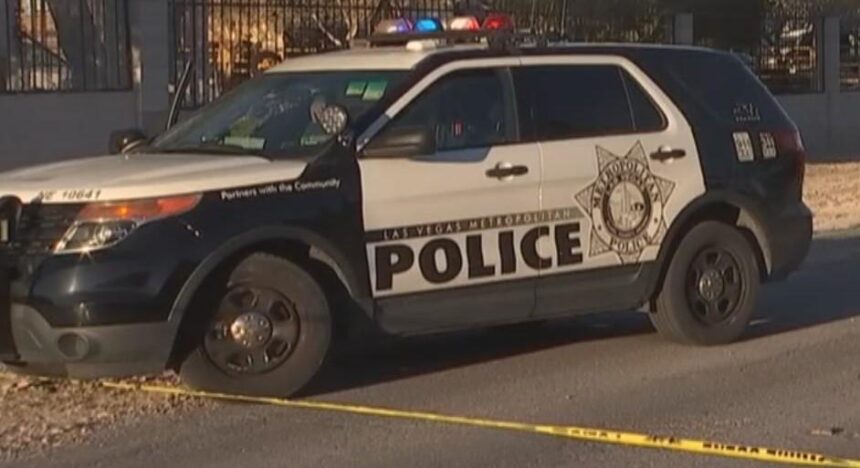Comprehensive Review of Las Vegas Metropolitan Police Use of Force: 2019–2023
The Las Vegas Metropolitan Police Department (LVMPD) has published its latest five-year analysis on use of force incidents, covering the period from 2019 through 2023. This extensive report sheds light on evolving patterns, policy adaptations, and community outreach efforts designed to bolster openness and accountability. Law enforcement leaders stress that these findings will inform future training programs and operational tactics as the department strives to address public concerns and enhance policing standards.
Evolution of Use of Force Patterns in Las Vegas Police Operations
Throughout the last half-decade, LVMPD has experienced a notable change in how force is applied during police interactions. The report reveals a consistent downward trend in physical force incidents, largely credited to improved officer education and strengthened community partnerships. There has been a marked shift toward prioritizing de-escalation strategies and the use of less-lethal options, which officials believe have contributed to enhanced public confidence and officer safety. Additionally, officers are exercising greater discretion in deploying tools such as tasers and batons, signaling a cultural change within the force.
Highlighted trends from the report include:
- Firearm discharges have dropped by nearly a quarter (24%) over the five-year span.
- Verbal commands as an initial response have increased by 18%, emphasizing communication over confrontation.
- Body camera usage reached full compliance (100%) by 2023, enhancing transparency and accountability.
- Use of force incidents remain proportionate across racial and ethnic demographics, reflecting equitable enforcement practices.
| Year | Use of Force Incidents | Firearm Discharges | De-escalation Success Rate |
|---|---|---|---|
| 2019 | 1,204 | 48 | 65% |
| 2020 | 1,102 | 39 | 68% |
| 2021 | 985 | 37 | 72% |
| 2022 | 910 | 30 | 75% |
| 2023 | 860 | 29 | 78% |
In-Depth Breakdown of Incident Types and Police Responses
The report categorizes use of force incidents by the nature of the calls,with the most common involving domestic disputes,traffic enforcement stops,and mental health emergencies. Each category requires a nuanced approach, with officers trained to adjust their level of force based on the behavior of individuals involved and situational risks. Notably, there has been a rise in force applications during mental health-related calls, underscoring a nationwide challenge for law enforcement agencies to effectively manage these complex situations.
Officer responses are classified into several tiers, ranging from verbal persuasion to physical restraint and the use of less-lethal devices. The following table presents the distribution of these tactics across all recorded incidents:
| Type of Officer Response | Percentage of Total Incidents |
|---|---|
| Verbal Commands | 45% |
| Physical Restraint | 30% |
| Taser Use | 15% |
| Firearm Discharge | 2% |
| Other Less-Lethal Methods | 8% |
These statistics highlight a strategic pivot toward prioritizing communication and non-lethal interventions, aiming to resolve conflicts with minimal harm. The growing emphasis on verbal and less-lethal tactics reflects ongoing updates to training protocols designed to protect both officers and community members.
Community Reactions and Perceptions of Police Conduct
The publication of the LVMPD’s five-year use of force report has sparked widespread community dialog, revealing a complex relationship between law enforcement and the public. While some residents commend the department’s efforts to increase transparency, others remain skeptical due to longstanding concerns about police accountability. Public forums and social media have become key platforms for these discussions, where citizens express their hopes and frustrations regarding policing reforms.
Factors shaping public opinion include:
- Transparency: The detailed data release has been welcomed as a step toward openness about police actions.
- Accountability: There is growing demand for stronger oversight and enhanced training to prevent misuse of force.
- Community Engagement: Initiatives promoting dialogue between officers and residents are increasingly viewed as essential for rebuilding trust.
| Influencing Factor | Community Sentiment |
|---|---|
| Transparency | Generally positive but cautious |
| Accountability | Calls for stronger enforcement |
| Engagement | Growing and proactive |
Strategic Recommendations for Policy and Training Improvements
In response to the findings of the use of force report,experts advocate for comprehensive reforms that prioritize transparency and accountability. Suggested policy changes include mandatory activation of body cameras during all police interactions, standardized de-escalation protocols, and rigorous documentation of every force incident. Institutionalizing these practices can help LVMPD build stronger community trust and ensure consistent enforcement of use of force guidelines.
Enhancing training programs is equally vital, with an emphasis on realistic scenario-based drills and cultural competency education to better prepare officers for diverse encounters. Recommended training upgrades include:
- Regular joint exercises with multiple agencies to improve decision-making under pressure.
- Annual refresher courses focused on mental health crisis management.
- Advanced communication skills training aimed at reducing confrontations.
| Reform Focus | Primary Objective | Anticipated Benefit |
|---|---|---|
| Policy Transparency | Open and accessible reporting | Increased public confidence |
| De-escalation Training | Effective crisis intervention | Fewer force-related incidents |
| Scenario-Based Drills | Stressful decision-making practice | More accurate officer responses |
Conclusion: Advancing Safer and More Accountable Policing in Las Vegas
The LVMPD’s recent five-year use of force report provides a critical lens into law enforcement dynamics and community relations. As stakeholders analyze this data, maintaining open communication and pursuing meaningful reforms remain essential to fostering accountability and trust. The department’s commitment to evaluating trends and implementing strategic improvements will be instrumental in shaping a safer, fairer policing habitat for all Las Vegas residents.
